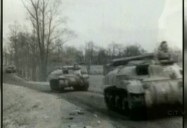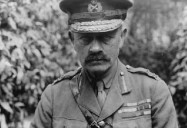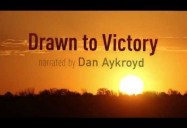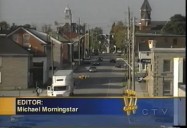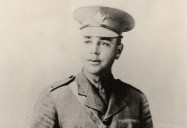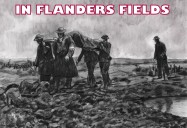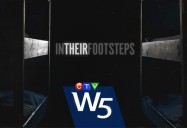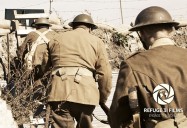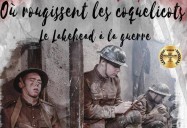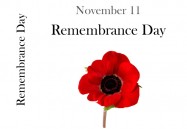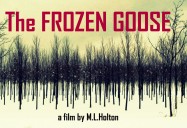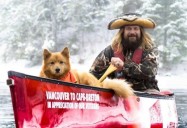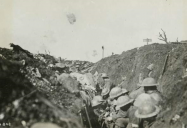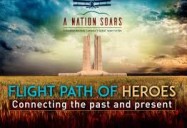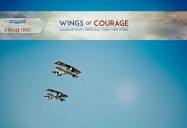
- Waterloo Catholic D S B Streaming Playlist
- WCDSB - After the Last River Playlist
- WCDSB - Remembrance Day Playlist
WCDSB - Remembrance Day Playlist
Drawn to Victory: A Nation Soars Series
Width Height
Grade Level: 6 - 8, 9 - 12, Post Secondary
Tells the story of how aerial photography (with some clever Canadian innovations) led to the development of the greatest tactical weapon of the First World War - accurate battlefield maps. It also shows how in the post-war years, the new technology was applied to Canada's vast swaths of unmapped land, and the first detailed maps of the country's interior were created.
|
Running Time: 48:00 Country of Origin: Canada Captions: |
Producer: Sound Venture Copyright Date: 2016 Language: English |
Video Chapters
-
Drawn to Victory: A Nation Soars Series 47:30
Tells the story of how aerial photography (with some clever...
TRANSCRIPT
Close- [MUSIC PLAYING]
- [GUNS FIRING]
- [MUSIC PLAYING]
- The First World War was a technically advanced and mechanized global conflict, the likes of which the human race had never seen before. New and more deadly weapons constantly changed the theaters of battle on land, on sea, and for the first time in the air. And one of the war's most powerful and strategic weapons that enabled one side to defeat the other was not made of metal, but paper. Accurate and reliable maps.
- So today we're getting you to georeference actual World War I topographic maps issued to the British expeditionary force at the very beginning of the war in 1914. The World War I collection at McMaster University is the largest collection outside of the National Archives in Ottawa. We have almost 1,500 maps and close to 600 aerial photographs.
- This particular one is a secret edition.
- And when I arrived on the scene, I had originally thought it was just going to be a series of battle maps. What I encountered was a tremendous evolution. It was the birth of aerial photography and there were many examples of the various stages through the four years of that evolution.
- These maps, in great detail and sometimes in great intimacy, reveal that hidden 90% of the war that most people never encounter. At the outbreak of the war because there wasn't much importance placed on mapping, maps general headquarters in France only had one officer and one clerk to supply the entire army.
- When the Allies started the war, the major maps supplied were road maps. And why? Because they were expecting a war of maneuver and movement. And so you needed to move forward, you needed to know where you were going, but it wasn't believed you needed a hugely accurate map. A road map would suffice.
- This was a deadly error in judgment as warfare drastically took a turn for the worse. The old tactics of thousands of soldiers with fixed bayonets engaged in open field battle supported by galloping cavalry charges was no longer the strategy of choice in this modern war. Now massive and powerful artillery guns could obliterate a battlefield and thousands of its advancing soldiers. And one gun, within minutes, could mercilessly cut down hundreds in their tracks.
- On my left, I have a Vickers machine gun. These weapons were used by the Canadian forces. These were exceptionally efficient killing machines. With one of these weapons being able to fire 500 rounds a minute, it effectively makes moving in a large formation over open ground a suicidal proposition.
- They present the firepower of roughly 100 riflemen in some cases, if not more. They heavily contribute to the stalemate.
- Machine guns were neutralized in a variety of different ways. The Allies sent out raiding parties at night or used snipers and artillery during the day. In some instances, incredible acts of bravery were witnessed as individual soldiers charged machine gun positions and single handedly rendered them inoperative.
- The First World War was rather unique because what you had was two armies of almost equal strength and the whole battle came to a standstill with neither side being able to cause the other to retreat. And what this did for the very first time in historical warfare really is it caused two armies to come to a standstill and dig in.
- So now you had this trench system that stretched several hundred miles with, in some cases, only tens of yards between the opposing sides. In fact, it's been said that sometimes you could smell what the other side was cooking for breakfast they were that close. And so it became very important to understand what was going on behind enemy lines.
- As the war becomes a static war, there's no movement, you need much more accurate maps to cite your artillery because you want to be able to hit accurately at certain points in certain places. You need to know where things are, where the enemy is developing their trenches and their fortifications, and where your troops are. And I can't stress that enough.
- But this was easier said than done. The antiquated Belgian and French maps of the late 1880s that the British were using to plan their offensives were not detailed enough. Adding to the frustration was that distance and elevation were in meters while the British used feet and yards. New maps were being patched together from reconnaissance provided by the cavalry, and to a lesser extent, observation balloons and kites.
- This is an excellent example of one of the early war maps where they're really trying to fill the need for mapping. This is at the stage when they were recruiting anyone who had artistic or draftsmen skills. And this is really unusual for a trench map to actually get an individual person's name written on the map as the cartographer. Down here in the lower left, we can actually see EC Bachelor Corporal and that he was with the 18th division headquarters.
- In this war of limited movement, most Allied initiated battles began with a massive onslaught of shells in the hopes that by sheer volume alone they would destroy the Germans' fortifications. This tactic proved ineffective.
- The Germans and Allied fortifications are somewhat different, and it's based on different ideologies. The Germans are occupying France and Belgium, and so their basic idea is as the war becomes increasingly static, we're on someone else's land. They can come and get us. The Germans are about defense.
- The French especially are about offense. So especially early on, their trenches are not very deep. They're not very well built. Because they were about we're getting our land back. We're moving forward, moving forward, moving forward. And the British sort of halfway in between the two.
- First World War trench conditions were horrific. There was little protection from artillery shelling. Soldiers were cold, wet, and muddy. There was rampant disease and rats. The stench of rotting bodies filled the air. Wounded men lying in no man's land screamed for their mothers.
- It was a dreadful existence for soldiers on both sides who were facing a massive amount of killing power that no one was really prepared for. Exploding shells and shrapnel from artillery fire killed more soldiers than any other weapon of the First World War. At the Battle of the Somme alone, almost 1.8 million artillery shells rained down upon German lines in the space of one week.
- The million dollar question becomes, how do we break through? And artillery increasingly become seen as one of the saviors. And so that's where the map and reconnaissance becomes important. Where are they? You're going to find it, and then you've got to hit it.
- Maps are really a weapon of war. If they're accurate, they greatly add to your arsenal. So if you're in a position where you can't view the enemy, all you can rely on is that map. That's your only pair of eyes.
- With a continuous line of intricate Allied and German trenches stretching almost 700 kilometers from the English Channel to Switzerland, there seemed no possible way to gather information over and behind enemy lines. The answer lay in a century defining invention that had appeared in the skies little more than a decade earlier.
- The Wright brothers were the first ones to really demonstrate controlled heavier than air flight. That was in 1903. That is really only 11 years before the outbreak of the First World War. And there was very little understanding or interest of the value of aircraft and how they might play a pivotal role in military operations.
- In fact, in 1908, the British Air Ministry recommended that investigations into the military application of this new found technology, aeroplanes, ought to be discontinued. Come 1909, a Frenchman by the name of Louis Bleriot crosses the English Channel in a flimsy aircraft.
- And suddenly, the British are shaking under their boots and they realize that their space could be breached by the air. And that shocked the British into taking aviation a little bit more seriously.
- There are quite a few museums where a person can go and observe aircraft from the First World War, but there's very few that actually will fly the aircraft. Here at The Great War Flying Museum, the common thread is that we all care about First World War aviation passionately. And it's our feeling that these airplanes are best appreciated in the sky.
- So to that end, we have built replica aircraft of the First World War vintage. There is a core group of highly skilled builders that manufacture these aircraft, and there's a core group of pilots that are capable of flying. The aircraft that's behind me is a Sopwith one and a half stutter.
- There were in total approximately 6,000 of these aircraft produced. It was designed from the very beginning to be a multi-role aircraft. It was good for both reconnaissance and aerial photography as well as bombing and to a limited extent it could dogfight. This is where the rear gunner and the observer would have been located. There was a seat for him to sit on, but at many points in the flight he would be standing.
- The primary role of the aircraft, and this is often forgotten in the way in which the First World War air war is viewed by many, is not the Knights of the sky. Your Red Barons and so on and so forth. The primary role of aircraft when they're brought in is for reconnaissance.
- Initial reconnaissance missions used single seat biplanes that did not have armaments or any mechanisms for gathering intelligence other than their pilots making observational notes.
- When the concept of having a two seater with an aerial observer came about, it was not uncommon for the observer to be a higher ranking individual than the pilot. And for instance, Baron von Richtofen, the highest scoring ace of the First World War began his career as a two seater observer. The idea back then was that the pilot was just the chauffeur for the higher ranking officer to see what the heck was going on over the battlefield.
- Often during these missions, enemy aircraft would pass one another. And both sets of pilots and observers would cordially wave as they headed to spy on each other's positions. Eventually, each side decided that they should prevent the other from gathering its intelligence.
- Friendly hand waves were soon replaced with threatening pistols as each crew took wild potshots at the other. Pistols gave way to rifles, and there was even a report of a German observer attaching a gramophone funnel on the end of his rifle to make it appear as a great big blunderbuss.
- Things change when they start mounting machine guns on the aircraft. And once you have that, you have a high firing weapon which gives you a much greater chance of hitting a target.
- Aerial photography evolved in tandem with the capabilities and firepower of aircraft as the Germans and Allies went head to head in a race to gather intelligence behind each other's lines.
- In the very early days, there wasn't a lot of support for aerial photography. So a number of officers took it upon themselves to actually just bring their own camera, get up in the plane, and hang over the side and take photographs.
- In March 1915, only seven months into the war, the Allies began formalizing their approach to gathering aerial intelligence and rolled out cameras specifically designed for air reconnaissance.
- This is a model A1 [INAUDIBLE] Division Eastman Kodak aerial camera. It takes photographs through the use of glass plates rather than film. So you have a magazine at the back of the camera here in which the glass plates are kept. This magazine can be changed out for another magazine.
- It's hard to believe that you can get such pinpoint accuracy, but the clarity of those glass plate negatives enabled them to see as much as a footprint in the mud from 13,000 feet in the air. The development of the cameras over the course of the war, the lenses, the focal lengths got longer. The carriages, the mountings gotten better. It's surprising, but the accuracy of the maps really comes from the aerial photographs.
- Now, the problem that you face is that you have to fly slow and straight. You present quite an easy target for other aircraft and anti-aircraft fire from below. You're also cold because you're high up in the air. So it's not the most comfortable place to be, even if you take out the dangers of someone trying to shoot you down. When you add that stress and add the stress of trying to get the best photographs you're trying to get, these guys have got quite a difficult task ahead of them.
- But these aerial pioneers focused on gathering crucial intelligence at altitudes as low as 3,000 feet were sitting ducks.
- Aerial reconnaissance crews are really the unsung heroes of the war. We always hear about the fighter pilots, but we don't often stop to think why were they up in the air anyway? Well, the only reason they're up there is because they know that that's when the reconnaissance flights come up and they want to shoot them down or perhaps defend their own reconnaissance flights as well.
- And soon the fighter aircraft started to engage one another. And this is where you have the evolution of the so-called dog fight.
- Once we get out into this area here, Anis, you'll let me know when you see the [INAUDIBLE] attacking?
- The museum was created in 1970 by three members of the Brampton Flying Club where we're currently located. Since that time, we decided to focus on maintaining the sights and sounds of First World War aviation. None of our aircraft are manufactured from kits. Each of them is scratch built.
- In general, they're not as easy to fly as modern aircraft. One of the reasons for that is that first of all, you're looking at aviation technology in its infancy. It really took the First World War to bring about massive change in aircraft design.
- In an effort to try to give people a sense of what it might have been like, we do mock dogfights during air shows and it gives people on the ground a sense of the drama that was involved.
- There we go.
- Governments on both sides fly up fighter pilots because they can place the ideas of the knights of the sky, and it's very romantic. You can situate a hero. A reconnaissance pilot on the other hand, their role was to take photographs.
- Now, their job arguably on some levels is just as important, if not more so. They're giving the information that allows the army to defend itself, to move forward, to prosecute the war effectively. But it's not as romantic or exciting.
- One such reconnaissance observer was Conn Smythe, the founder of the Toronto Maple Leafs and the man whose name is immortalized on the trophy given to the most valuable player of the NHL playoffs. While serving with the Royal Flying Corps in 1917, Conn Smythe was shot down, captured, and remained a German POW until the end of the war.
- Perhaps one of the most famous Canadian reconnaissance pilots of the First World War was Second Lieutenant Alan McLeod. While McLeod and his observer, Lieutenant Arthur Hammond, were on a mission, a German Fokker triplane attacked. Hammond returned fire and successfully shot it down. Then seven more German Fokker triplanes swarmed their Armstrong Whitworth FK8.
- After skilfully engaging with the enemy, their fuel tank was hit and their aircraft burst into a burning inferno. McLeod climbed out onto the aircraft's wing and side slipped it steeply to keep the flames away from Hammond, who kept on shooting. During the attack, McLeod was shot a total of five times and Hammond six.
- Their doomed aircraft crashed in no man's land and McLeod was thrown clear. Despite his injuries, McLeod went back to the mangled burning wreckage and pulled Hammond to safety. Alan McLeod was only 18 years old. For his astonishing act of bravery, he received the Victoria Cross. He was its youngest recipient.
- Photo reconnaissance flights often started at the crack of dawn. There was a particular advantage to taking a photograph in the early light as well as the later light of the evening, and that was in the production of shadows on the ground. Now, if you knew the time of day, you could figure out the inclination of the sun. You could measure the size of the shadow and you could therefore determine the height of the object on the ground that you were filming.
- The science behind aerial mapping was to shoot a series of overlapping photographs which featured the same fixed points. Once on the ground, the challenge was to make sense of it all and transfer it onto paper to create maps.
- They have to plan to take many photographs along that flight line. That includes then planning out the speed of the airplane, the timing between exposures. So a man might have a stopwatch in one hand and a notepad and he's clicking the camera shutter, changing the film, advancing the film, waiting, waiting, waiting, click, take another photograph. A very repetitive process, but on a very methodical set of lines.
- Photos were developed back in the field at these field survey stations. They would be pieced together to create one continuous mosaic base map, then they would be passed on to the cartographers. He's getting the accurate measurements, the shapes, the areas, the sizes of the features, but he's delineating them.
- He's drawing those boundaries. He's coloring them in. He's using symbols which we can more immediately identify so we can read and interpret that information quicker.
- Another innovation they were toying with during the war was hip symmetric tinting just to make the elevation information stand out more. You can see someone here has been trying to add that tinting on the map with whatever colored pencils were at hand. We can see that this was a very heavily used map at first sight. It doesn't take a genius to discover that this was a map used in the field. So here we have vintage French mud from 1917 battlefields.
- The great evolution which certainly existed before World War I but which was pushed forward in a much more accelerated fashion was the use of contour lines. They show exactly where the elevation goes up at what elevation you are. And for things war related, knowing how high the hill was you had to climb, knowing how far and exactly where the gun was that you were trying to take out was a critical element.
- [GUNS FIRING]
- The artillery used contour lines because they can't fire the projectiles through the hilltops. So they have to be able to go from known feature to known feature. Contour lines are important for the soldier on the ground. If he is visible, he can be shot.
- With this entirely new mapping process evolving on the fly, cartographers soon realized that one size fits all did not apply for the army.
- It was soon discovered that officers needed maps showing larger areas so they could plan the grand picture. And the artillery needed more detailed maps of smaller areas for target precision firing. And infantry units for things like trench raids or their own individual operations during a larger conflict needed even more detailed maps of a very small area.
- So to give you an idea of the difference in scale, this map is a one to 40,000 scale map used by officers for planning the entire action. That's one centimeter to 400 meters. Square 28 is this size on that map. If we look at the scale of a map that the artillery were using at the time, this is one to 20,000 or one centimeter equals 200 meters. And here we have that same square 28.
- And here we have the most detailed scale. One to 5,000, that's one meter representing just 50 meters. This would have been what the small sections or small units of infantry would have had to use during the battle. And here that same square 28 fills this area on the map. Almost the entire center of the map.
- Another obstacle that had to be overcome was the lack of consistency regarding the use of colors and symbols appearing on maps. When the war began, tactical information was often sketched onto maps with colored pencils. Officers invented their own symbols for everything from trench mortars to artillery field placements.
- You have Britain, you have France fighting side by side, but they're not speaking the same cartographic language. As a matter of fact, for the first three years of the war, Britain were coloring their trenches blue and the enemy German trenches red, while the French, their allies, were using the exact opposite color scheme. So nailing down the colors, using the right symbols would obviously go a long ways to avoiding confusion and possible death in some situations.
- A new two stage printing process greatly aided in the move to standardization.
- Base maps were produced at the Ordinance Survey in Southampton and shipped over to the front in large quantities. And they were stored on hand at these field survey companies near the front lines. So that would speed up the distribution of the maps.
- The field survey companies who are collecting the information could create a layer of trench and tactical information which they could simply print over top of a topographic map. Then it goes to the courier on a bike, on a horse, on a motorcycle to whatever units they need to deliver it to.
- A significant development in map making came from using a stereoscope. It provided cartographers with the three dimensional perspective they had been searching for.
- Once they started overlapping the photos in order to get accuracy for a base map, they discovered that if they overlapped them even more by about 75%, they could actually get a 3D image because they could see the same feature in two different photos but from a slightly different angle which mimicked the spacing of our eyes.
- So 3D imagery was important for two major things. The first one was it allowed those cartographers to be able to see depth. So suddenly, they could see where the land was rising, where the depressions were. Things that would look flat in one single two dimensional photograph. The other important aspect that came out of 3D imagery was its ability to identify objects that were camouflaged.
- You see there's an increasing development of camouflage as the war goes on. And here, this is where camouflage changes. You don't have to worry about camouflaging for line of sight now, but also for aerial because this guy is looking down at you as well. And so you have a development of new camouflage techniques.
- Guns are painted different colors. They push now to break up the colors of the guns. The use of camouflage knitting. And you also develop mock batteries where you present fake batteries. Where you make a fake gun out of cardboard or an old gun and then make a fake crew out of scarecrows.
- So you have to train people to know what to look for. And there are some very, very cool photographs of guys basically hanging off chairs that have been strapped to the walls looking down and they're being taught how to do artillery observation.
- Each year, map sections grew in size. They went from being field survey companies to field survey battalions to meet the ever increasing demands.
- Each one of these maps were created for a different purpose at a different date for a different branch of the military during World War I. You name the purpose, they developed the map for it. Everything the soldier needs he has either carried up or somebody has brought forward to him.
- The lumber, the wire, the sheet metal, the barbed wire, and the machine gun, ammunition, the food, the water. Somebody had to lug that stuff forward. And it required maps so people would know where to move things towards and distribute the supply depots close enough to be useful behind the lines.
- Over here we have a map of the EAP region. And this is kind of the back area behind friendly lines. And we can see that this map is delineating water stations, natural springs, deep wells. A colossal amount of work put in just to support the war effort.
- Maps are very important for all phases of the battle, especially behind the lines.
- This is what's known as a message map. These were issued to officers going into attacks so that they could communicate their situation very rapidly back to headquarters behind the lines for evaluation. This is a World War I soldier's equivalent of a modern day smart phone.
- First of all, you've got the small portable size. You've got your map information, like calling up Google on your phone. Based on aerial photography like our modern maps are based on satellite imagery. And then when it comes time, you can send your text message.
- We've got a printed form on the back here and they can say what their situation is. They can say whether they're being held up by an enemy machine gun or by wire. They can request extra ammunition, water, hand grenades. These little guys only appeared in the last half of the war when the printing process became very streamlined, became a well oiled machine, and they were able to just crank out the maps by the thousands.
- Aerial reconnaissance was at sometimes supported with intelligence gained from trench raiding.
- Canadians become quite good at it. The Australians actually hunt the Canadians out because they've heard of the Canadians' aggressive nature when they come to the Western Front after being in the Middle East, after Gallipoli, to train them in trench raiding.
- Involving a single soldier or up to hundreds armed with knives and clubs, these adrenaline pumping, tension filled snatch and grab night raids kept up the offensive spirit and offered a welcome change of pace from the strain of trench life. Through the capture of enemy soldiers, important documents such as enemy orders and maps fell into Allied hands.
- And the Allies themselves were so worried about their maps falling into German hands that they quite often didn't print their own trenches on the map. There were many hand-drawn sketch maps by Allied soldiers basically because the trenches themselves were just this maze, this spider web of passage ways.
- Trench maps are marvelous cartographic masterpieces. Every little jog, every little jigsaw, every little corner is a real place. And they're not approximations, they're actual locations on the ground. So like a street map, the trench maps help the Allied soldiers know how to move around. And as well for the enemy positions so they would understand where the more vulnerable portions of the enemy's lines were.
- This is a perfect example of a trench map. And this particular one was produced by the Canadian Corps themselves. . We can see in the upper left hand corner this was labeled secret. This means that this map would have been produced in very limited numbers and it would have been required to stay at headquarters.
- You can see all of the German trenches listed here in red. The front firing trenches with this crenelated pattern. The communication trenches running back and forth between the other rows of trenches. A lot of attention given to the location of machine guns, trench mortars, signal stations, and so forth all appearing on the map.
- And this particular map sheet was actually labeled Ottawa Road. It was not unusual for troops if they were concentrated in a particular area to start giving their own names to the roads in the trenches. We have many maps in our collection that contain names like Alberta Trench, Toronto Trench, Halifax Trench.
- [HORN SOUNDING]
- Vimy Ridge, an escartment on the western edge of the Douai plains in France was a seemingly unsolvable obstacle. Attempts to take the ridge by the French army in 1915 and the British in 1916 both failed. Now it was the Canadians' turn.
- The battle would be the first time all four Canadian divisions would fight together, consisting of more than 97,000 Canadian soldiers alongside their British counterparts. Success for the Canadians very much depended on neutralizing the German artillery.
- It was life or death. And it was truly the time when the evolution of the power of the map, the power of making a good map, A, and B, the power of giving the good map to the soldiers on the ground and letting them peruse them, letting them spend time with them, letting them get to know the environment in which they were about to go into battle was pivotal, was life saving, and in fact, in the end, probably was war winning.
- Aerial reconnaissance represented a key success factor in the Battle of Vimy Ridge, which is recognized as the battle in which Canada was put on the map as an international fighting force.
- By March 1917, roughly 85% of the German batteries around Vimy have been identified through aerial reconnaissance. This gun would be a prize target, and one of the types of guns that aerial observers would be looking for to cool down counter-battery fire for on-- because it is a devastating weapon. And you'll note that on the barrel it does actually have damage from counter-battery fire.
- If you can take those out-- which the Canadian artillery does very well. It's a huge advantage. And you need the maps. You need the aerial reconnaissance and the map points to know where they are so you can take them out.
- This is a very rare 3D topographical map of the Vimy Ridge area. It was produced a week before the Canadian assault on the ridge in April 1917. And what they've done actually is taken a number of maps and cut along the graphical lines and then glued to each layer on so the people looking at this map have an idea of the understanding of the topography rather than just simply looking at a flat surface.
- More than 40,000 maps were given to even the lowest ranking Canadian soldier in preparation for Canada's assault on Vimy Ridge on Easter Monday, April 9, 1917. Having everyone on the same page became common practice with the Canadians at Vimy Ridge and at all subsequent Canadian battles.
- This is one of the most significant maps in our World War I collection. It was prepared for the Battle of Vimy Ridge at the extreme detailed scale of one to 5,000. This would have been something that would have been in the possession of the small unit commanders like NCOs, possibly sergeants with just a section of men.
- So by Vimy, this was the important change as they were starting to disseminate this information and share these maps right down to the small sectional unit. We even have some hand annotations here of where the different Canadian units were going to be penciled in after they had actually printed the map.
- When you see any of the maps that have these handwritten annotations, it's almost like you travel back 100 years in the blink of an eye. You suddenly have that connection with something that is so old and that person who wrote that in extreme circumstances possibly under duress, there's that connection. I don't know quite how to describe it, but it's almost palpable.
- Well rehearsed and armed with unsurpassed topographic intelligence, the Canadians and British had a distinct advantage and were victorious.
- Canadians should be proud because Canadian troops acquitted themselves well on the battlefield and under horrific conditions. You go around Vimy Ridge, for example, some areas are still not accessible to the public because they are still filled with unexploded ordinance. You can still see shell craters and trench lines in some places.
- Looking at World War I maps and looking at the work that was done there, I'm genuinely just amazed at the beauty and the clarity of the work that they did. And it really sort of laid the groundwork for what cartography has become into the future. And in so many ways, it's never been improved upon. I'd say it's a lot like the first album that somebody cuts. Every element that was put onto it is intuitive, clear, aesthetically beautiful. It was just done right.
- What started at the beginning of the war as a trivial afterthought with one British officer and one clerk operating out of Maps General Headquarters in France by wars' end had grown to almost 5,000 allies who produced more than 32 million maps.
- The progression of mapping during the war certainly would have seemed like a Renaissance era because you had multiple technologies exploding. You had camera technology, you had aviation, you had cartography. I'm hard pressed to find another period of time other than maybe the development of the printing press when cartography advanced so quickly.
- Because of the First World War, mapping went into a new direction. It had entered the modern age and there was no looking back. War time advancements paid off in peacetime benefits.
- Prior to World War I, the Canadian Mapping and Charting Establishment estimated it was going to take 3,600 years to map all of Canada basically because there was huge areas of highly inaccessible terrain. It was just such a huge landmass.
- One of the most important figures in Canadian engineering and mapping history was General Andrew McNaughton. He did good things in World War I. He was a successful general so people listened to him. But he was an engineer. He was a smart guy when it came to maps, and math, and the business of building a country.
- Yes, he'd been a soldier at war, but he saw the need for making maps to pull the country together, to raise our standard of living, raise our standard of public knowledge. He decided that the best way was to start mapping more of the country. They had aviation, they had survey, they had manpower, there was a national will. It became a mission to improve the mapping that they'd had to stop in 1914.
- In the 1920s, the Canadian government made an effort to outfit the Canadian Air Force with biplanes that could land on the water. The observer camera man sat out in the front of the bow of this flying boat and he had an unrestricted field of view. He could take pictures to his delight. And that's exactly what they did. And much of Canada's north was opened up and mapped during the 1920s as a result of technology that was developed during the First World War.
- And not since the striking of the last spike to signify the completion of a Pan Canadian Railroad has there been a greater geographical feat to unify the entire country. The mapping of Canada eventually saw the nation fully mapped from sea to sea to sea in 60 years.
- One of the first skills that we teach Canadian soldiers is how to read a map. Soldiers today know how to read and write. In World War I it was a slightly different demographic. Many men had not gone through as much schooling. But still, they would have been taught.
- This as a road, this is a river, this is north, these are the grid lines, this is how you take a grid location. So as much as a soldier needs to know how to fire his rifle, even in World War I he had to know how to read a map.
- Right now we're standing in the warehouse of the Canadian Forces Map Depot. We've got maps from anywhere Canada is likely to be. No airplane flies, no ship sails, no boots on the ground without either a map or data that we provide. You can put a bullet through a computer and it's dead. You put a bullet through a piece of paper, you just got a little hole. Every soldier wants to have a paper map in his pocket as his fallback. As much as it's an information age, we work on paper.
- These are topographic map sheets of Afghanistan. This is where Canadian forces fought a lot of very hard battles. There's a name of a place that many Canadian soldiers will know, Masum Ghar. There's Bazaar-e-Panjwai, the Pashmul District where Canadian forces fought a great deal.
- This is almost sacred ground for a lot of Canadian soldiers. A lot of blood. Very coincidentally, we pulled this sheet. This is an important map sheet for a lot of Canadian soldiers. I am standing on the shoulders of giants. I do not have the manual skills, the math skills to do a quarter of the work that they ever accomplished.
- We have to remember when the war broke out, airplanes had only been around for 10 years. So I'm not quite sure I know how we got men to volunteer to go up into these rickety contraptions that were made of a few sticks of wood, some wire cabling, canvas mounted on a couple of airplane wheels. Told to fly up about 10,000 feet into the air with no parachute, and then fly slow and straight over enemy lines taking overlapping photos while you're shot at from the ground and from the air. Blows my mind.
- The bravery and resourcefulness of thousands of British and Canadian pilots not only raised intelligence reconnaissance to new heights, but also changed the nature of mapping forever. More than 22,000 Canadians flew for the Allies. Only a handful reached the coveted status of being recognized as an ace. But all of them are remembered as risk takers and innovators in a time when flight went beyond the inventor's dream and became a weapon of war.
- [MUSIC PLAYING]
TRANSCRIPTS:
Interactive Transcript
Transcript (PDF)
